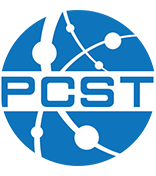‘A form of sanity check’ – How people at CERN view science communication
Author: Daria Dvorzhitskaia – CERN, ITMO University, Russia
Co-authors:
Angelos Alexopoulos – CERN
Alexander Gerber – Rhine-Waal University of Applied Sciences
Achille Petrilli – CERN
Alexander Struck – Rhine-Waal University of Applied Sciences
The goal of this study was to explore which models of science communication prevailed in the views of people affiliated with CERN. The analytical framework of science communication models proposed by Brian Trench (2008) served as the theoretical basis. The theoretical models were operationalised into short statements. The participants were then asked to choose the most suitable continuation of the phrase ‘When you publicly communicate fundamental physics, you…’ Data was collected via an anonymised online questionnaire. The respondents (N = 418) mainly worked in physics (64%), came from 60 different countries (73% from Europe) and were 30 years old or younger (63%).
The Deficit model was the most important for the majority (52%) of the respondents, excluding cases where a variant of this model (Defence or Marketing) was specified. The results suggest that, in order to represent the Deficit model more accurately, these two variants should be complemented by another one, which would encompass the desire of individual scientists to share scientific results or passion for science with the public. It is also necessary to investigate further how different models (e.g. Deficit and Dialogue) coexist in the minds of communicators.
Some interesting points were raised concerning the value added to fundamental physics by science communication. One idea was that it enabled scientists to reflect on their knowledge and goals. Another one stated that non-scientists had an unbiased, creative perspective on the subject, making it a valuable input for the common search for knowledge. Some respondents also expressed an opinion that ‘science communication was the ultimate goal of any fundamental science’.
The study was carried out at CERN in March-September 2017. It set a starting point of identifying the specifics of communication in the field of fundamental physics with regard to science communication theory, providing ideas for further research on this topic.
Presentation type: Individual paper
Theme: Science
Area of interest: Building a theoretical basis for science communication
